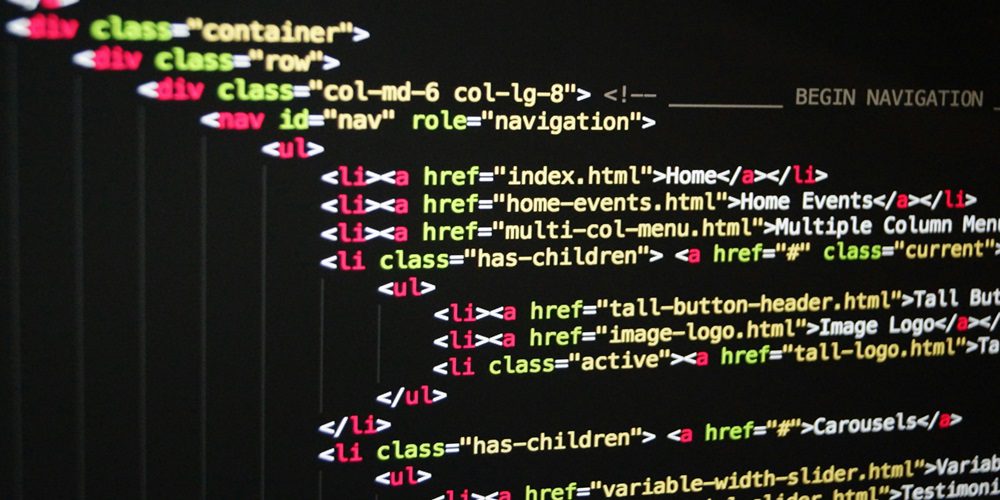The Future of Blockchain: Exploring Generative AI's Impact on Cryptocurrency

As technology continues to evolve at a rapid pace, the intersection of blockchain and generative AI is poised to revolutionize the world of cryptocurrency. In this blog post, we will delve into how these cutting-edge technologies are shaping the future of finance and explore the potential benefits and challenges that lie ahead. Join us as we uncover the exciting journey towards a new era in digital currency powered by innovation and creativity.
Insight into Blockchain and Generative AI
Blockchain is essentially a digital ledger that records data in a secure and immutable manner. It was initially designed for financial transactions but has evolved to be used for other purposes such as supply chain tracking, voting systems, and even healthcare record management. The key feature of blockchain is decentralization – there is no central authority controlling the network, making it virtually impossible to hack or manipulate.
On the other hand, AI refers to computer systems that can perform tasks that usually require human intelligence. This includes things like learning from data, recognizing patterns, and making decisions based on that information. Generative AI takes this a step further by generating its own content or solutions without needing explicit instructions from humans.
Now let’s bring these two concepts together. Generative AI operates on the blockchain framework by utilizing smart contracts – self-executing code stored on a blockchain platform. These smart contracts allow for automated decision-making processes within an organization while ensuring transparency and immutability thanks to their execution on the decentralized blockchain network.
This combination addresses some significant challenges faced by traditional AI systems such as biased data sets or lack of transparency in decision-making processes. With generative AI operating on a decentralized network like blockchain, there is little room for manipulation or biased data input since all transactions are recorded securely and transparently on multiple nodes across the network.
Moreover, generative AI also brings new exciting possibilities to cryptocurrencies. Virtual currencies like Bitcoin already operate on blockchains but with the integration of generative AI, we could see even more advanced and secure financial systems emerge. For example, AI algorithms could analyze market trends and predict future price movements for various cryptocurrencies, providing valuable insights for traders and investors.
The combination of blockchain technology and generative AI has vast potential to shape the future of cryptocurrency. It brings a much-needed level of transparency, security, and efficiency to these digital currencies while also opening doors to innovative solutions in other industries where decentralized systems are necessary. As technology continues to evolve, so will the possibilities for this powerful fusion between blockchain and generative AI.
Understanding the Role of Generative AI in Cryptocurrency
The rise of cryptocurrency has been one of the most significant technological and financial developments in recent years. The decentralized nature, anonymity, and security provided by blockchain technology have revolutionized the way we perceive and transact with money. However, as the world of cryptocurrency continues to evolve and mature, there is another technology that is gaining traction and could potentially shape its future – generative artificial intelligence (AI).
Generative AI refers to a subset of artificial intelligence that focuses on creating new content or information based on patterns learned from existing data. In simpler terms, it involves using algorithms that can generate new ideas or concepts without direct human input. This technology has already shown tremendous potential in various industries such as music, art, and literature. But how does it relate to cryptocurrency?
One significant application of generative AI in cryptocurrency is in the creation of automated trading bots. These bots use complex algorithms to analyze market trends and make informed decisions on buying and selling cryptocurrencies. With access to vast amounts of historical market data along with real-time updates, these bots can make split-second trades that humans may not be capable of executing.
Furthermore, generative AI can also help improve security within the blockchain ecosystem. As hackers continue to find ways to exploit vulnerabilities within cryptocurrencies’ infrastructure, developers are constantly looking for ways to enhance security measures. By leveraging generative AI’s capabilities such as pattern recognition and anomaly detection, experts believe that it could play a vital role in enhancing blockchain’s security protocols.
Another aspect where generative AI could have a significant impact on cryptocurrency is through improved scalability. Currently, one major drawback of many popular cryptocurrencies like Bitcoin is their inherent limitations in terms of transaction speed and volume processing capabilities. Through advanced machine learning techniques like deep learning neural networks, developers can work towards creating more efficient protocols that can handle higher volumes at faster speeds.
Moreover, one exciting possibility with generative AI is its potential to enable predictive analysis of market trends. By analyzing vast amounts of data, generative AI could help identify patterns and predict future price movements of cryptocurrencies. This information can be valuable for traders and investors looking to make informed investment decisions.
The Impact of Generative AI on Security and Privacy in Cryptocurrency
Generative AI is a branch of artificial intelligence that uses algorithms to create new content or data based on patterns observed from existing data. This technology has shown incredible potential in areas such as language translation and image synthesis. However, its impact on security and privacy in cryptocurrency remains a topic of debate.
One major impact of generative AI on security is its ability to manipulate and falsify data. With access to large amounts of historical transaction data, generative AI can produce fake transactions that appear legitimate, misleading both users and systems into believing they are valid. This can be particularly damaging in the world of cryptocurrency where trust is essential in ensuring the authenticity of transactions.
Moreover, generative AI can also be used for targeted attacks by identifying vulnerabilities within blockchain networks and exploiting them to gain unauthorized access to funds or sensitive information. This threat poses a significant challenge as it becomes increasingly difficult for companies to defend against these sophisticated attacks.
Additionally, privacy concerns arise from the potential misuse of personal information through the use of generative AI. As this technology continues to improve, there is a possibility that it could decipher patterns from user behavior or private keys used in authentication processes. Such information could then be used by malicious actors to gain access to user accounts or steal sensitive financial information.
To combat these threats posed by generative AI, several measures are being implemented within the cryptocurrency community. One approach involves implementing strict protocols for network security and storage practices to ensure that sensitive information is not accessible through external sources.
Another solution involves incorporating machine learning capabilities into systems that can detect fraudulent activities in real-time, reducing the risk of data manipulation by generative AI. Furthermore, research is underway to develop advanced authentication methods, such as biometric recognition or multi-factor authentication, to enhance security and privacy in cryptocurrency transactions.
Revolutionizing Transaction Speeds with Generative AI
Blockchain technology has been a game-changer in the world of finance, transforming the way we conduct transactions by eliminating the need for intermediaries and providing a secure and transparent platform for peer-to-peer transactions. However, one major challenge that blockchain technology faces is its slow transaction speeds. While traditional banking systems can process thousands of transactions per second, many blockchain platforms struggle to handle even just a few hundred. This has been a significant barrier for mainstream adoption as users continue to demand fast and efficient transactions.
Fortunately, this is where Generative Artificial Intelligence (AI) comes into play and offers a solution. Generative AI refers to machines or algorithms that have the ability to create or generate new content autonomously without human intervention. By integrating generative AI with blockchains, it is possible to revolutionize transaction speeds and make them faster than ever before.
The key reason behind blockchain’s slow transaction speeds is its consensus mechanism. In order for a transaction to be processed on the blockchain, it has to go through multiple verification steps by nodes across the network. These nodes validate each transaction by solving complex mathematical puzzles known as algorithms before adding them to the blockchain ledger. This process can take minutes or even hours depending on network congestion and size.
However, generative AI can significantly reduce this processing time by optimizing the consensus mechanism through automated decision-making processes. With advanced machine learning algorithms capable of solving complex problems quickly and efficiently, these AI-powered nodes can process large amounts of data in real-time, drastically reducing transaction times from minutes to seconds.
Moreover, generative AI also offers intelligent routing capabilities that enable transactions to bypass congested parts of the network automatically, ensuring quicker processing times even during peak usage periods. This not only improves transaction speeds but also minimizes potential bottlenecks in the system.
Another significant benefit of incorporating generative AI into blockchain technology is enhanced security. With its autonomous nature, generative AI can constantly monitor network activity and identify any potential threats or hacks, strengthening the overall security of transactions.
Expanding Possibilities for Smart Contracts with Generative AI
Smart contracts, which are self-executing agreements between parties that are coded into a blockchain, have revolutionized the way transactions are conducted in the digital world. From financial transactions to supply chain management, smart contracts provide a secure and efficient way to automate processes and remove intermediaries. However, as innovative as they may seem, there is still room for improvement in their capabilities. This is where the integration of generative artificial intelligence (AI) comes in.
Generative AI refers to technology that has the ability to create or generate content autonomously based on data it has been trained on. This technology has already been applied in various industries such as art, music, and design with impressive results. But its potential impact on blockchain and specifically smart contracts is yet to be fully explored.
One of the main limitations of current smart contracts is their static nature – they can only execute tasks based on predetermined conditions set by their creators. With generative AI integrated into smart contract protocols, these self-executing agreements will become more dynamic and adaptive. Unlike traditional rules-based systems, generative AI can learn from data inputs and make decisions based on real-time information.
As a result, we can imagine a future where smart contracts can adapt to changing market conditions or unexpected events without the need for human intervention. For example, if there is a sudden spike in demand for a product or service covered by a smart contract, the pricing terms could automatically adjust based on real-time data gathered through IoT devices. This would eliminate delays caused by manual intervention or renegotiations between parties.
Another area where generative AI can enhance smart contracts is in terms of error detection and correction. Human error is inevitable when coding complex agreements into blockchain protocols. Generative AI algorithms have the ability to identify errors within existing code and suggest corrections for smoother execution of tasks. This would not only save time but also reduce risks associated with potential bugs or vulnerabilities in the code.
Moreover, by analyzing and learning from past transactions, generative AI can also help improve the efficiency and accuracy of future smart contracts. Through machine learning algorithms, it can identify patterns in data and optimize processes for better performance. This could result in cost savings for businesses as well as faster and more reliable transactions.
Leveraging Machine Learning for Predictive Analysis in Cryptocurrency Trading
Machine learning is a field of artificial intelligence that focuses on developing algorithms and models that can learn from and make predictions based on data. These algorithms are trained using historical data such as price trends, market sentiments, and other relevant factors to identify patterns and potential correlations. This information is then used to generate predictions about future market trends.
One major advantage of leveraging machine learning for predictive analysis in cryptocurrency trading is its speed and efficiency. Traditional methods of analysis involve manual research, which can be time-consuming and prone to human error. With machine learning techniques, large volumes of data can be processed in real-time, allowing traders to make quick decisions based on current market conditions.
Furthermore, machine learning models have the ability to continuously learn from new data inputs. This means that as the cryptocurrency market changes over time, these models can adapt and refine their predictions accordingly. This adaptability makes them well-suited for the volatile nature of cryptocurrencies.
Another benefit of using machine learning for predictive analysis in cryptocurrency trading is its ability to consider multiple factors simultaneously. Unlike traditional analysis methods that focus on a few key indicators, machine learning algorithms can take into account numerous variables that may affect cryptocurrency prices – such as social media trends or news sentiment – providing a more holistic view of the market.
Moreover, by utilizing advanced natural language processing techniques, machine learning models can analyze unstructured text from various sources such as news articles or social media posts. This allows for a deeper understanding of how external events or developments may impact particular cryptocurrencies.
However, it’s important to note that while machine learning offers significant advantages for predictive analysis in cryptocurrency trading, it also has its limitations. These algorithms heavily rely on historical data and trends, and any sudden shifts in the market that deviate from these patterns can potentially lead to inaccurate predictions.
Potential Challenges and Ethical Considerations of Incorporating Generative AI into Blockchain Technology
The integration of generative artificial intelligence (AI) into blockchain technology has the potential to revolutionize the world of cryptocurrency. With its ability to generate unique and unpredictable outputs, generative AI can bring new levels of security and innovation to blockchain networks. However, with this advancement also comes potential challenges and ethical considerations that must be carefully addressed.
One major challenge that may arise from incorporating generative AI into blockchain is the risk of malicious use. As with any technology, there is always a possibility for it to be exploited by bad actors for their own gain. In the case of generative AI on blockchain, this could mean using the technology to manipulate transactions or create fraudulent coins. This highlights the importance of implementing stringent security measures to prevent such misuse.
Another challenge lies in ensuring the compatibility and scalability of these two cutting-edge technologies. While both have shown great potential individually, their integration may pose technical difficulties if not planned and executed properly. As blockchain networks expand and evolve, they will need to be able to support the complex computations required by generative AI.
Ethical considerations also come into play when incorporating generative AI into blockchain technology. The decentralized nature of blockchain means that decisions are made through consensus among network participants rather than a central authority. This raises questions about who holds responsibility for any unethical actions performed by a generated algorithm within the network.
Moreover, there are concerns surrounding issues such as data privacy and bias in algorithm training datasets. These issues must be addressed in order to ensure that generative AI on blockchain is developed ethically, with transparency and accountability at its core.
In addition, while increased automation through generative AI can bring efficiency gains for transactions on blockchain networks, it could potentially lead to job displacement in certain sectors where middlemen or intermediaries currently play critical roles. It will be important for stakeholders involved in this advancement to consider ways to address these potential economic impacts.
Future Outlook: Predictions for the future of Blockchain
The future outlook of blockchain and cryptocurrency is a constantly evolving landscape. With the emergence of generative artificial intelligence (AI), there are endless possibilities and potential for innovation in this space.
One prediction for the future of blockchain is increased efficiency and scalability. Currently, blockchain technology struggles with high transaction fees and slow processing times. However, with the integration of generative AI, these issues can potentially be resolved. By utilizing AI algorithms, transactions can be processed at a much faster rate and with lower fees. This would greatly improve user experience and make cryptocurrency more accessible to the masses.
Another prediction is the widespread adoption of blockchain technology in various industries beyond finance. Generative AI has the ability to revolutionize supply chain management, voting systems, healthcare record keeping, and many other sectors by providing secure and transparent data management. As companies begin to see the benefits of incorporating blockchain into their operations, we can expect to see a significant increase in its use.
Furthermore, it is predicted that generative AI will enhance security measures in blockchain networks. The decentralized nature of blockchain already provides strong security against hacking attempts but adding AI algorithms on top can further strengthen this protection. By constantly adapting and learning from potential threats, generative AI can identify vulnerabilities and mitigate them before they are exploited.
On a larger scale, some experts predict that decentralization will eventually become the new norm due to generative AI’s impact on blockchain technology. As we move towards a more digital world where trust in centralized institutions is declining, decentralized systems offer an alternative solution that relies on mathematics rather than human fallibility.
Conclusion
The future of blockchain technology and cryptocurrency is constantly evolving, with new innovations emerging every day. As we have explored in this article, generative AI has the potential to greatly impact the world of cryptocurrency by increasing efficiency, security, and accessibility for users. With continuous advancements being made in both fields, it will be exciting to see how they intertwine and shape the financial landscape of tomorrow. As always, staying informed and adaptable is key when it comes to navigating this rapidly changing industry.





